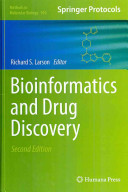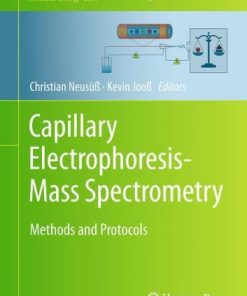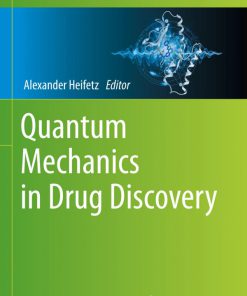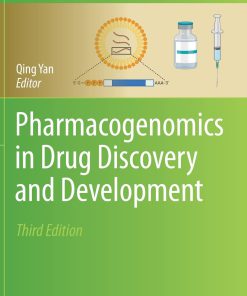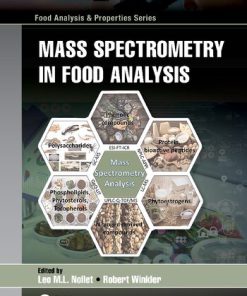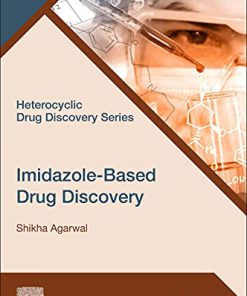High-Throughput Mass Spectrometry in Drug Discovery by Chang 9781119678465 1119678463
$50.00 Original price was: $50.00.$25.00Current price is: $25.00.
High-Throughput Mass Spectrometry in Drug Discovery Chang Liu – Ebook Instant Download/Delivery ISBN(s): 9781119678465,1119678463

Product details:
- ISBN 10:1119678463
- ISBN 13:9781119678465
- Author: Chang
High-Throughput Mass Spectrometry in Drug Discovery
Mass spectrometry is a technique that identifies and characterizes compounds based on their mass — the fundamental molecular characteristic. It has become an invaluable analytical tool in various disciplines, industries, and research fields. It has become particularly central to new drug discovery and development, which broadly deploys mass spectrometry at every phase. The pharmaceutical industry has become one of the main drivers of technological development in mass spectrometry.
High-Throughput Mass Spectrometry in Drug Discovery offers a comprehensive introduction to mass spectrometry and its applications in pharmaceutical discovery. It covers the foundational principles and science of mass spectrometry before moving to specific experimental methods and their applications at various stages of drug discovery. Its thorough treatment and detailed guidance make it an invaluable tool for pharmaceutical research and development.
High-Throughput Mass Spectrometry in Drug Discovery readers will also find:
- Detailed analysis of techniques, including label-free screening, synthetic reaction optimization, and more
- An authorial team with extensive combined experience in research and industrial applications
- Technical strategies with the potential to accelerate quantitative bioanalysis in drug discovery
High-Throughput Mass Spectrometry in Drug Discovery is essential for analytical, bioanalytical, and medicinal chemists working in the pharmaceutical industry and for any researchers and graduate students interested in drug discovery and development.
Table contents:
List of Abbreviations
Section 1: Introduction
1 Forty‐Year Evolution of High‐Throughput Mass Spectrometry
1.1 Introduction
1.2 Ionization Foundations of High‐Throughput Mass Spectrometry
1.3 High‐Speed Serial Chromatographic Sample Introduction
1.4 Parallel Chromatographic Sample Introduction
1.5 High Repetition Rate Lasers
1.6 Ion Mobility for High‐Speed Gas‐Phase Separations
1.7 Mass Spectrometer Sensitivity
1.8 High‐Speed Sub‐Microliter Volume Sampling
1.9 Conclusions and Future Prospects
References
Section 2: LC‐MS
2 The LeadSampler (LS‐1) Sample Delivery System
2.1 Introduction
2.2 Hardware and System Design
2.3 Software Integration
2.4 Enabling Emerging Techniques
2.5 Concluding Remarks
References
3 Evolution of Multiplexing Technology for High‐Throughput LC/MS Analyses
3.1 Introduction and Historical Developments
3.2 Developments Toward Fully Integrated Multiplexing Systems
3.3 Broadening Customer Options
3.4 Workflow and End‐User Considerations
3.5 Conclusion
References
Section 3: ESI‐MS Without Chromatographic Separation
4 Direct Online SPE‐MS for High‐Throughput Analysis in Drug Discovery
4.1 Introduction
4.2 History of the Development of Direct Online SPE‐MS
4.3 Hardware Details and Data Processing
4.4 Instrument Performance Highlights
4.5 Applications
4.6 Others
4.7 Future Perspectives
References
5 Acoustic Sampling for Mass Spectrometry
5.1 Introduction
5.2 Technology Overview
5.3 System Performance
5.4 Applications
5.5 Challenges and Limitations
5.6 Conclusion
References
6 Ion Mobility Spectrometry‐Mass Spectrometry for High‐Throughput Analysis
6.1 Introduction of Ion Mobility Spectrometry
6.2 IMS Fundamental and Experiment
6.3 IMS Analysis and Applications
6.4 High‐Resolution SLIM‐IMS Developments
6.5 Conclusions
References
7 Differential Mobility Spectrometry and Its Application to High‐Throughput Analysis
7.1 Introduction
7.2 Separation Speed
7.3 Separation Selectivity
7.4 Ultrahigh‐Throughput System with DMS
7.5 Conclusions
7.A Chemical Structures
References
Section 4: Special Sample Arrangement
8 Off‐Line Affinity Selection Mass Spectrometry and Its Application in Lead Discovery
8.1 Introduction to Off‐Line Affinity Selection Mass Spectrometry
8.2 Selected Off‐Line Affinity Selection Technologies and Its Application in Lead Discovery
8.3 Future Perspectives
References
9 Online Affinity Selection Mass Spectrometry
9.1 Introduction of Online Affinity Selection‐Mass Spectrometry
9.2 Online ASMS Fundamental
9.3 Instrument Hardware and Software Consideration
9.4 Type of Assays Using ASMS
9.5 Applications Examples and New Modalities of ASMS for Drug Discovery
9.6 Future Perspectives
References
10 Native Mass Spectrometry in Drug Discovery and Development
10.1 Introduction
10.2 Fundamentals of Native MS
10.3 Instrumentation
10.4 Application Highlights
10.5 Conclusions and Future Directions
References
Section 5: Other Ambient Ionization Other than ESI
11 Laser Diode Thermal Desorption‐Mass Spectrometry (LDTD‐MS)
11.1 A Historical Perspective of the LDTD
11.2 Instrumentation
11.3 Theoretical Background
11.4 Sample Preparation
11.5 Applications
11.6 Conclusion
References
12 Accelerating Drug Discovery with Ultrahigh‐Throughput MALDI‐TOF MS
12.1 Introduction
12.2 uHT‐MALDI MS of Assays and Chemical Reactions
12.3 Bead‐Based Workflows
12.4 Using Functionalized, Modified, and Microarrayed MALDI Plates for HT‐MALDI
12.5 Summary and Future Trends
Acknowledgment
References
13 Development and Applications of DESI‐MS in Drug Discovery
13.1 Introduction
13.2 Development of DESI and Related Ambient Ionization Methods
13.3 Applications in Drug Discovery
13.4 Conclusions and Future Outlook
References
Section 6: Conclusion
14 The Impact of HT‐MS to Date and Its Potential to Shape the Future of Metrics‐Based Experimentation and Analysis
14.1 Defining High‐Throughput Mass Spectrometry (HT‐MS)
14.2 HT‐MS: Impact to Date
14.3 Considering How HT‐MS Will Shape the Future of Drug Discovery
References
Index
End User License Agreement
People also search:
high-throughput mass
high-throughput mass spectrometry
high-throughput mass spectrometry in drug discovery
high-throughput mass spectrometry assay
high-throughput mass spec
You may also like…
Biology and other natural sciences - Molecular
Uncategorized
Physics - Quantum Mechanics
Quantum Mechanics in Drug Discovery by Alexander Heifetz 9781071602812 1071602810
Uncategorized
Science (General)
Medicine - Molecular Medicine
Uncategorized
Imidazole-Based Drug Discovery (Heterocyclic Drug Discovery) 1st Edition Shikha Agarwal



